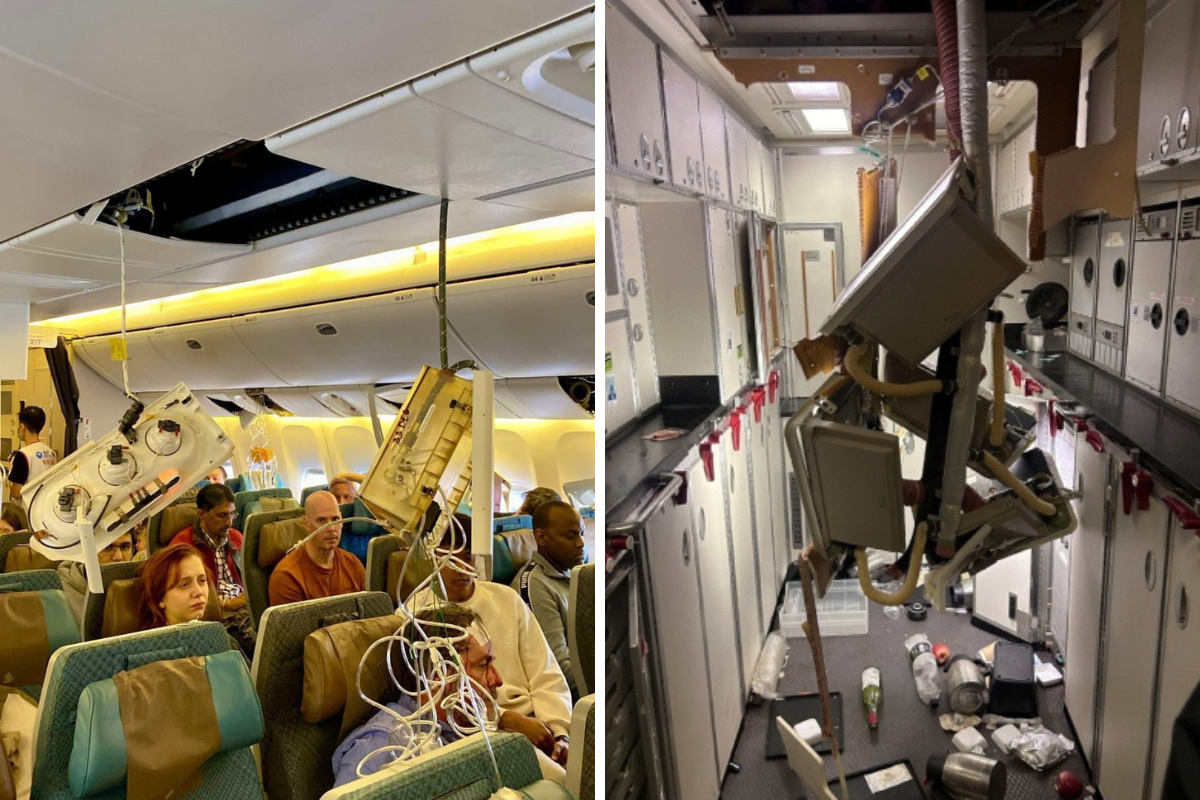
Singapore Airlines announced on Tuesday that it will offer $25,000 in compensation to the most seriously injured passengers from flight SQ321, which encountered severe turbulence as it flew from London Heathrow to Singapore on May 20, tragically killing one passenger onboard.
The compensation detailed on Tuesday is an advance payment, and Singapore Airlines has indicated that the final amount paid to passengers who suffered life-changing spinal, neck and head injuries could end up being a lot higher.
Singapore Airlines has been paying for the private medical care of all the passengers injured during the flight, and as of June 4, around 20 passengers still remain in hospitals in Bangkok, where the flight made an emergency medical diversion after it was rocked by turbulence.
For the dozens of passengers who sustained minor injuries, Singapore Airlines has offered compensation totalling $10,000, while everyone onboard the flight has received a full refund on their ticket. In addition, the airline said it would honour its commitments under British and European delay compensation rules.
The actual compensation that injured passengers receive could end up being a lot higher than what Singapore Airlines has initially offered, and some passengers are likely to make legal claims under the Montreal Convention.
Article 17 of the Montreal Convention makes airlines liable for injuries or deaths sustained by passengers during a flight unless the airline can prove the injury was caused by the passenger’s own negligence.
The limit of liability for airlines is currently set at 128,821 Special Drawing Rights – an international reserve asset created by the International Monetary Fund (IMF) in 1969.
Special Drawing Rights represent a basket of currencies which means that their value can fluctuate and change over time. As of June 11, 128,821 SDR is worth approximately $170,000.
In a statement issued on the airline’s official Facebook page, Singapore Airlines said it “deeply apologises to all passengers for the traumatic experience on board flight SQ321 on 20 May 2024. We are committed to providing our full support and assistance during this time.”
“Passengers medically assessed as having sustained serious injuries, requiring long-term medical care, and requesting financial assistance are offered an advance payment of US$25,000 to address their immediate needs,” the statement continued.
“This will be part of the final compensation that these passengers will receive.”
“We provided all passengers with S$1,000 each to meet their immediate expenses upon departure from Bangkok. SIA has also been covering the medical expenses of the injured passengers, and arranged for their family members and loved ones to fly up to Bangkok where requested.”
Late last month, a preliminary accident report published by the Transport Safety Investigation Bureau of Singapore revealed that the pilots of SQ321 turned on the fasten seatbelt signs just seconds before the plane suddenly dropped 178 feet, flinging anyone who wasn’t belted in towards the ceiling.
The turbulence that caused the most serious injuries lasted just five seconds, and tragically, 73-year-old passenger Geoff Kitchen died as a result of a suspected heart attack.
In the aftermath of the incident, Singapore Airlines said it would change its approach to turbulence and suspend all meal services whenever the seatbelt sign is switched on. Cabin crew will also be required to strap themselves into their jumpseats.
Related
Mateusz Maszczynski honed his skills as an international flight attendant at the most prominent airline in the Middle East and has been flying ever since... most recently for a well known European airline. Matt is passionate about the aviation industry and has become an expert in passenger experience and human-centric stories. Always keeping an ear close to the ground, Matt's industry insights, analysis and news coverage is frequently relied upon by some of the biggest names in journalism.








Your title is factually accurate, but it is very “click-baity”. Per the email SQ sent out, they offered an advance of $25k which will be subtracted from the total settlement.
Yea, accepting is probably a bad idea, but your article title is very misleading.